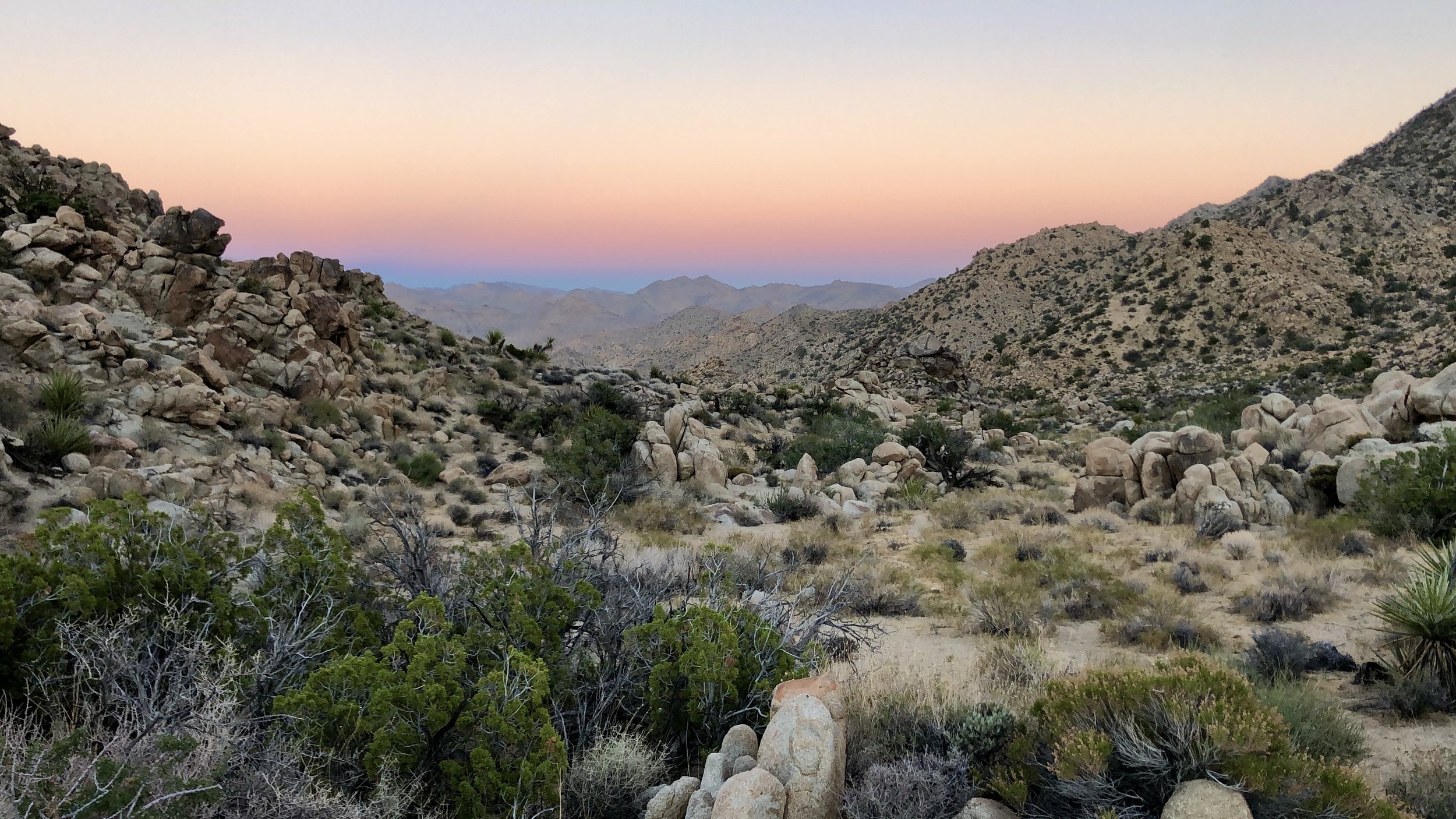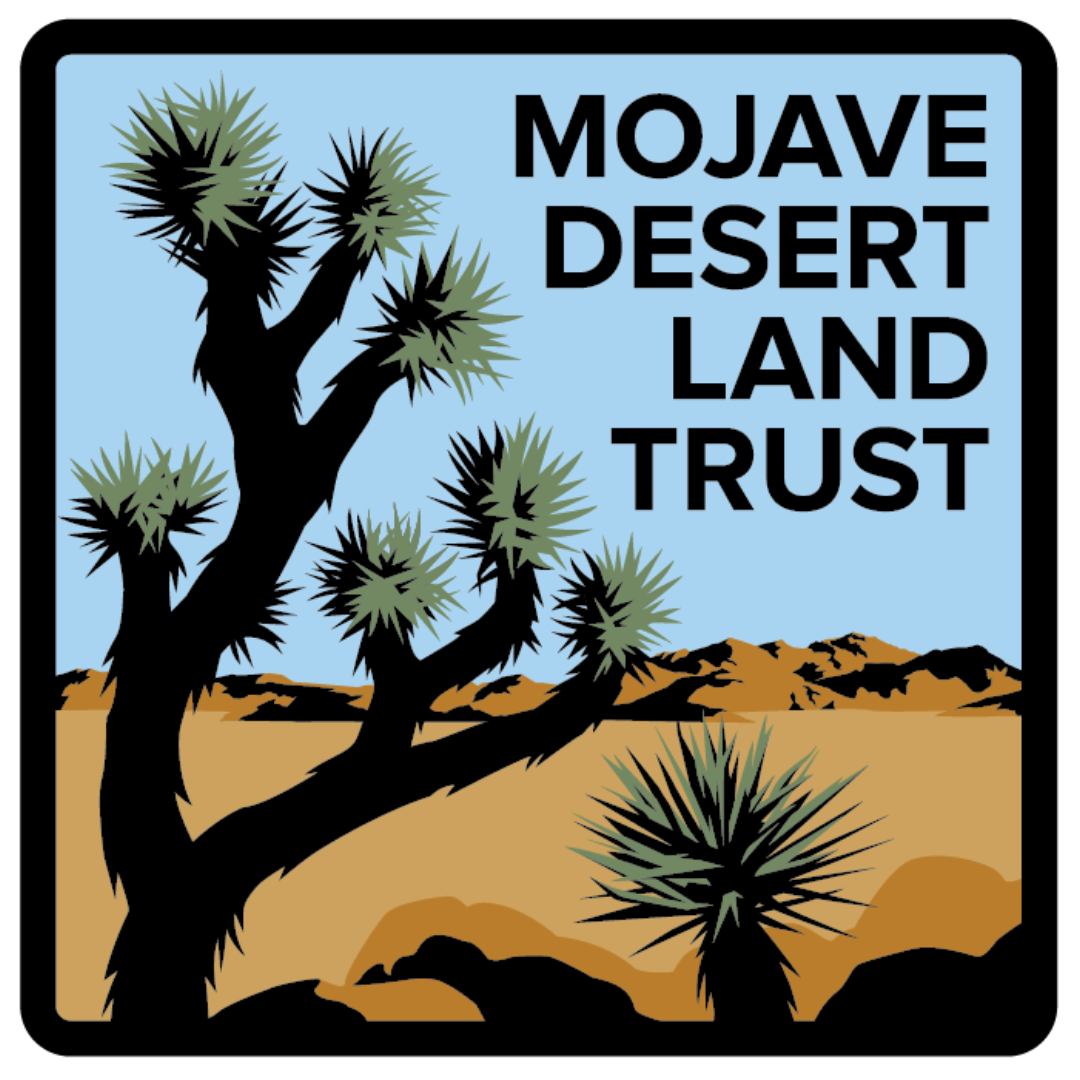
MOJAVE DESERT LAND TRUST
Let’s get outside!
MDLT is committed to protecting public lands in the California deserts and ensuring that all people feel welcome to enjoy them. Communities are stronger, more connected, and healthier when they have access to public lands and open spaces.
Here you’ll find a list of local, free, accessible lands to visit and resources on how to explore the desert safely.
Where to go
There are lots of free public lands to explore in the Morongo Basin, but you don’t have to travel far to spend time in nature! Exploring your neighborhood or spending time in your own backyard can be just as fulfilling.
Click here to access a full-size PDF of the map of free local public lands.
Town of Yucca Valley
North Park - North Park includes 80 acres of natural open space on patent from the Bureau of Land Management. The Town of Yucca Valley recently purchased an adjacent parcel to gain access to North Park from a public street. Currently, this parkland is undeveloped with a rustic hiking trail. (See page 23)
South Park - South Park consists of 40 acres of natural open space on patent from the Bureau of Land Management. Existing facilities include a trail head with a dirt parking lot and short 0.7 mile loop trail.
Please see page 23 of this document for information on both.
San Bernardino County Special District
Desert View Conservation Area - The Desert View Conservation Area, also known as Section 6, is comprised of 605 acres of undeveloped land. Limited to day use only, this area is popular for hiking and horseback riding on designated trails.
San Bernardino County Regional Parks
Big Morongo Canyon Preserve - At 31,000 acres with elevations ranging from 600 feet on the canyon floor to 3000 feet at the top of the ridge, this diverse landscape is an important part of the Morongo Basin’s natural and cultural history, and in 2016 was incorporated into the Sand to Snow National Monument. The Preserve is open daily from 7:30am until sunset.
The Wildlands Conservancy
Pioneertown Mountains Preserve - The 25,500-acre Pioneertown Mountains Preserve descends from the high piney 7,800-foot ridges into the Pioneertown Valley. It is an important landscape linkage between Joshua Tree National Park, San Bernardino National Forest, and the Big Horn BLM Wilderness.
Mission Creek Preserve - Located in a transition zone between the Sonoran and Mojave deserts, the 4,760-acre Mission Creek Preserve has a rich species composition with flora and fauna representing both deserts.
Mojave Desert Land Trust
Nancy Karl Trail - This trail is within a sensitive ecological area. Please follow Leave No Trace principles. There is very limited parking.
Know before you go
-
Don’t assume you can find drinks on your trip! One gallon of water per person, per day is the absolute minimum that should be carried.
-
Always tell someone where you are going and when you plan to return. In the event that you don’t make it home when you thought you would, they will know to be on the lookout. The more information you share, the more this person will be able to help if you get lost.
-
Fill up when you pass a station, even if you still have plenty of fuel. It may be a long distance to the next open station.
-
In summer, layered clothing slows dehydration and minimizes exposure. Good hiking shoes, loose fitting natural-fiber clothing, a wide brimmed hat, sunglasses and sunscreen are a must.
In winter, temperatures can often drop below freezing with icy winds. Bring extra warm clothing.
-
Flash floods may occur any time thunderheads are in sight. Weather can change in the desert quite rapidly. Don’t stick around in dry washes (arroyos) which can flood suddenly.
-
Cellphone reception can be spotty to nonexistent. Don’t rely on the internet to help you navigate. Ideally, you should also carry an up-to-date printed map of the area before exploring by foot or vehicle in case your phone gets lost, broken, or dies. USGS topographic maps show land contours and specific features.
-
If an incident occurs on a remote road, it can be a long time until help arrives.
-
Two-wheel drive vehicles are generally ok, but 4WD can be required. Check current conditions of dirt roads before venturing to a remote location. Roads may become impassable in bad weather or from past storms. Be safe and drive with care.
-
Be prepared! Have adequate first aid supplies, including enough medication for anyone who requires it.
-
Water, sunscreen, a shade hat and sturdy walking shoes are a few of the obvious items. Download our handy Desert Pack List to make sure you don’t forget anything important!
-
Read more about desert safety basics.

Get free passes!
-
Adventure Pass
In partnership with the First Partner’s Office and the Natural Resources Agency, State Parks is offering the California State Park Adventure Pass, which provides free entry for fourth graders and their families at 54 amazing state parks throughout the state. Mountains, deserts, forests, rivers … the choice of where to visit is yours!
-
Golden Bear Pass
In support of California’s Outdoors for All initiative, Department of Parks and Recreation (State Parks) and the California Department of Social Services (CDSS) offer this free pass to California Work Opportunity and Responsibility to Kids (CalWORKs) and Tribal TANF families. This pass provides free vehicle day-use access at over 200 California State Parks-operated units.
-
Every Kid Outdoors
This federal program is designed specifically for fourth graders to obtain a special pass for the entire school year (August to August) that grants free entry into hundreds of National Parks and other public lands! Educators can also visit the website, download an activity for students to complete, and print off the paper passes for students.
Desert Indoors learning modules
Learn about the desert from the comfort of your own home. Desert Indoors is a creative and fun resource for the community that has been adapted from our Desert Discovery Field Studies program. Families can access free content below to learn more about the desert ecosystem. Everything is designed for use at home or on nearby open land. Some modules are available in Spanish.







